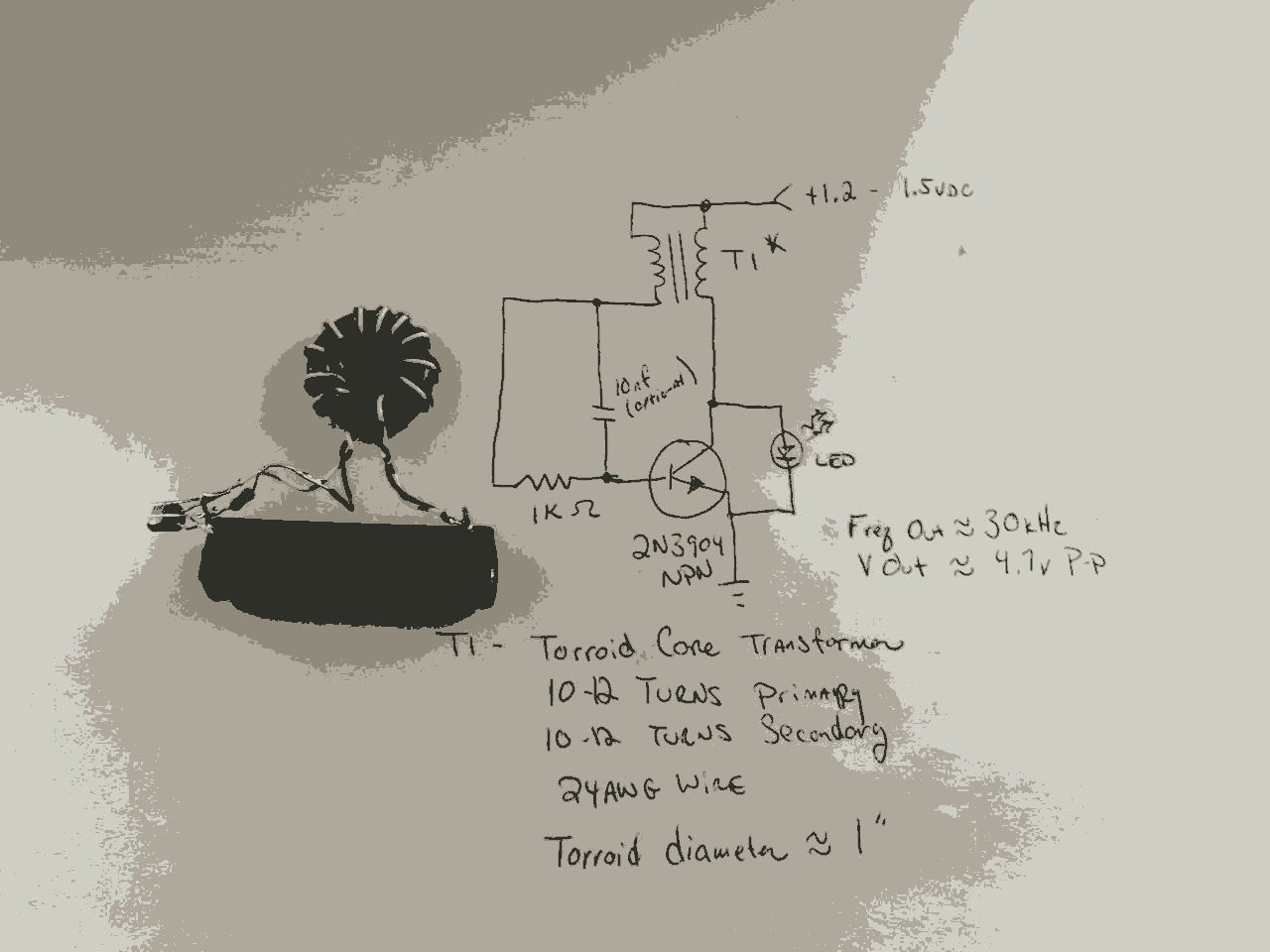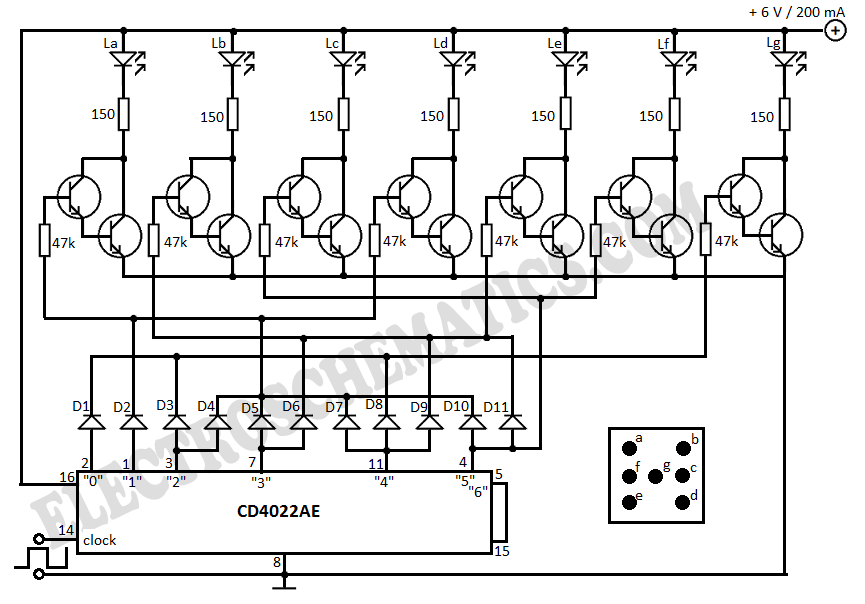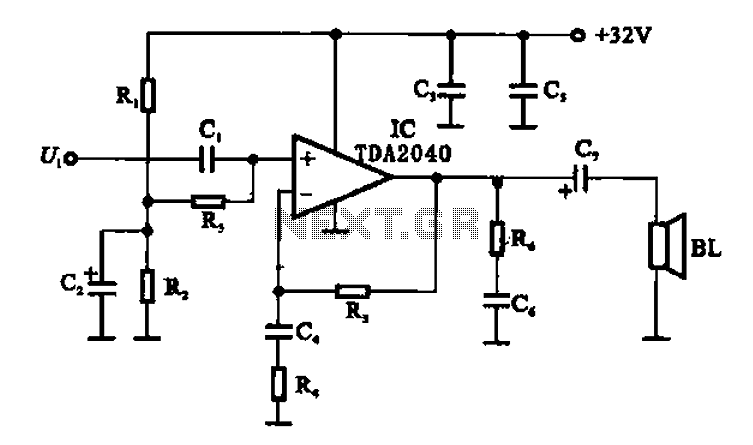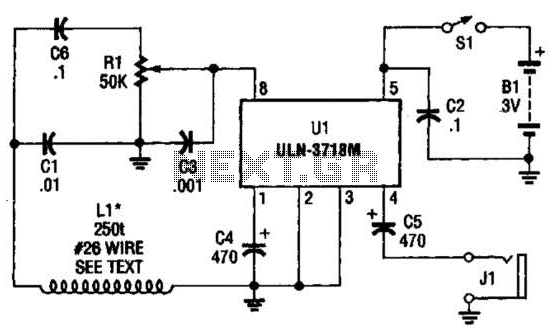
The Joule Thief circuit

In the previous post, the primary principles of the switching power supply were discussed. Essentially, an oscillator drives a transformer with a ferrite core at a relatively high frequency, thereby minimizing the size, weight, and cost of power supplies. This project utilizes the same principles to drive a white LED.
The circuit design for driving a white LED using a switching power supply involves several key components: an oscillator, a transformer with a ferrite core, a rectifier, and a current-limiting resistor. The oscillator generates a high-frequency square wave signal, which is fed into the primary winding of the transformer. The ferrite core of the transformer enhances the efficiency of energy transfer, allowing for a compact design.
The transformer steps up or steps down the voltage as needed, depending on the specifications of the LED. The output from the transformer is then passed through a rectifier, typically a diode bridge, to convert the AC signal into a DC signal suitable for powering the LED. Following the rectification, a current-limiting resistor is included in series with the LED to ensure that the current flowing through the LED does not exceed its maximum rating, thus preventing damage.
In addition to these components, filtering capacitors may be used at the output to smooth the DC voltage, providing a more stable power supply to the LED. This configuration not only enhances the performance of the LED but also contributes to the overall efficiency of the power supply by reducing losses associated with heat and electromagnetic interference.
The use of a switching power supply for LED applications is advantageous due to its ability to operate efficiently at high frequencies, which allows for a reduction in the size and weight of the overall power supply system. This makes it particularly suitable for portable and compact electronic devices that require effective lighting solutions.In the last post I discussed some of the primary principals of the switching power supply. Essentially an oscillator drives a transformer with a ferrite core at a relatively high frequency, thus minimizing the size, weight, and cost of power supplies. In this project we use the same principals to drive a white LED. 🔗 External reference
The circuit design for driving a white LED using a switching power supply involves several key components: an oscillator, a transformer with a ferrite core, a rectifier, and a current-limiting resistor. The oscillator generates a high-frequency square wave signal, which is fed into the primary winding of the transformer. The ferrite core of the transformer enhances the efficiency of energy transfer, allowing for a compact design.
The transformer steps up or steps down the voltage as needed, depending on the specifications of the LED. The output from the transformer is then passed through a rectifier, typically a diode bridge, to convert the AC signal into a DC signal suitable for powering the LED. Following the rectification, a current-limiting resistor is included in series with the LED to ensure that the current flowing through the LED does not exceed its maximum rating, thus preventing damage.
In addition to these components, filtering capacitors may be used at the output to smooth the DC voltage, providing a more stable power supply to the LED. This configuration not only enhances the performance of the LED but also contributes to the overall efficiency of the power supply by reducing losses associated with heat and electromagnetic interference.
The use of a switching power supply for LED applications is advantageous due to its ability to operate efficiently at high frequencies, which allows for a reduction in the size and weight of the overall power supply system. This makes it particularly suitable for portable and compact electronic devices that require effective lighting solutions.In the last post I discussed some of the primary principals of the switching power supply. Essentially an oscillator drives a transformer with a ferrite core at a relatively high frequency, thus minimizing the size, weight, and cost of power supplies. In this project we use the same principals to drive a white LED. 🔗 External reference





